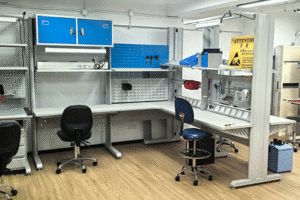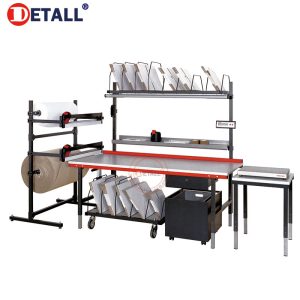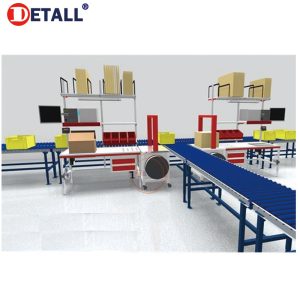Workbench ESD Options from Tech Lab: How to Create the Ideal Electronic Laboratory?
When building a professional electronic laboratory, many people overlook the critical role of ESD protection at each workstation.
An electronic lab must be equipped with ESD-safe workstations and accessories to ensure the safety and efficiency of circuit design, testing, and repair.
Most people know they need basic tools, but fewer realize that a true professional lab needs a system-level ESD solution. This article helps you plan your lab and select the best ESD furniture options.
What is an electronic laboratory?
When building a new workspace, you must first understand what an electronic lab is meant for.
An electronic laboratory is a space where students, researchers, or engineers design, build, test, and analyze electronic circuits under controlled conditions.
A Deeper Look at Electronic Laboratories
An electronic lab supports areas like analog electronics, digital electronics, embedded systems, and microcontroller applications. The lab focuses on developing hands-on skills, from circuit design to debugging. In my own career, I have seen how essential it is to set up the right environment to avoid costly mistakes. Whether used in teaching or industrial R&D, a properly equipped lab improves the success rate of projects significantly.
| Key Functions of Electronic Labs | Examples |
|---|---|
| Circuit design and prototyping | Breadboarding, PCB design |
| Testing and troubleshooting | Oscilloscope use, multimeter measurements |
| System integration | Embedded development |
What basic equipment and conditions are necessary for an electronic laboratory?
Many people think a few instruments are enough, but the real need is for a well-rounded infrastructure.
A complete electronic laboratory must include safe power systems, ESD protection measures, good lighting, and essential test instruments.
Essential Setup Requirements for Electronic Laboratories
During my projects, I always emphasize starting with stable AC power, proper grounding, and protective devices. For example, a good power rail integrated into the workbench with leakage and overload protection is necessary. Without that, equipment and users are at risk. Beyond safety, efficient lighting, comfortable ventilation, and a complete set of measuring instruments are critical for daily tasks.
| Category | Must-Have Items |
|---|---|
| Power and Safety | Stable AC power, leakage protection |
| ESD Environment | ESD workbench, wrist straps, ESD mats |
| Lighting and Ventilation | Adjustable LED lighting, air circulation |
| Basic Instruments | DC power supply, oscilloscope, function generator |
| Storage for Components | ESD-safe drawers, labeled organizers |
What kind of workbench is more suitable for an electronic laboratory?
Choosing the right workbench can change your work speed and protect your sensitive devices.
A modular, ESD-safe workbench with adjustable height, integrated storage, and power distribution is ideal for an electronic laboratory.
Choosing the Right Workbench
In my experience setting up labs for clients, modular workbenches offer the best long-term value. They can integrate tool hanging systems, lighting, ESD mats, and dedicated AC/DC outlets. High-end options even include custom racks for instruments like oscilloscopes and power supplies. Also, adding adjustable height features prevents ergonomic issues for engineers who spend long hours at the bench.
| Workbench Feature | Why It Matters |
|---|---|
| ESD-safe surfaces | Prevents circuit damage |
| Adjustable height | Ergonomic operation |
| Integrated lighting | Reduces eye strain |
| Built-in power management | Safe and efficient setup |
| Modular accessories | Easy customization |
What ESD accessories can improve your workstation?
Even the best workbench needs the right ESD accessories to complete the setup.
Key ESD accessories like wrist straps, anti-static mats, ESD storage units, and proper grounding systems are essential to protect sensitive electronics.
Building a Full ESD Protection System
Simply using an ESD table is not enough. You must complete the protection chain. For example, in my own setup projects, I always install 1 megohm resistors in grounding lines. This ensures any discharge happens slowly, preventing damage. Connecting wrist straps properly and isolating ESD grounding from high-voltage grounding are also critical. Organizing electronic components in ESD-safe drawers keeps sensitive parts safe even when not in use.
| Accessory | Function |
|---|---|
| Anti-static wrist strap | Safely grounds the user |
| ESD table mat | Protects circuit boards |
| ESD grounding point | Connects bench and wrist strap |
| ESD-safe component storage | Prevents charge accumulation |
| ESD jackets and shoes | Full-body static control |
Conclusion
Setting up an electronic lab with proper ESD options and workbench solutions is the key to protecting equipment and improving project success.



